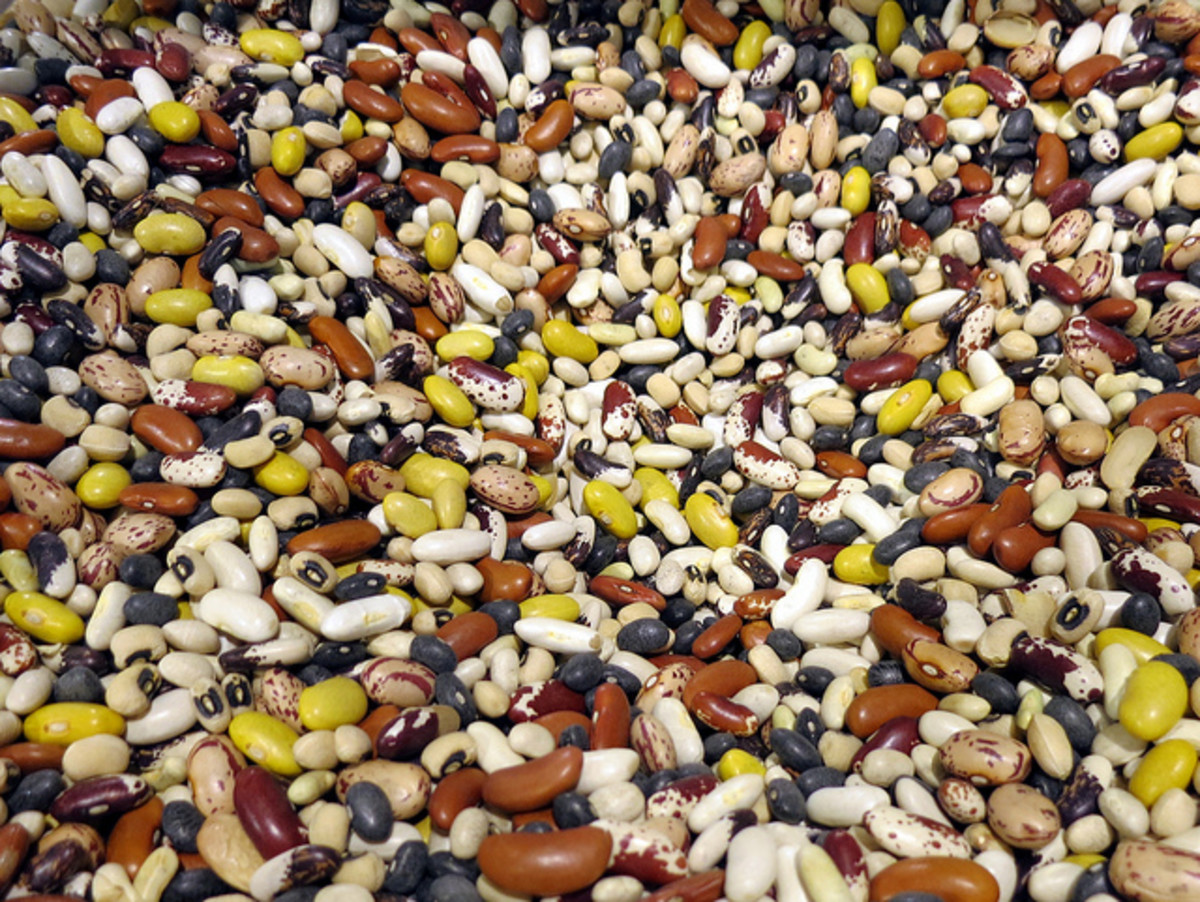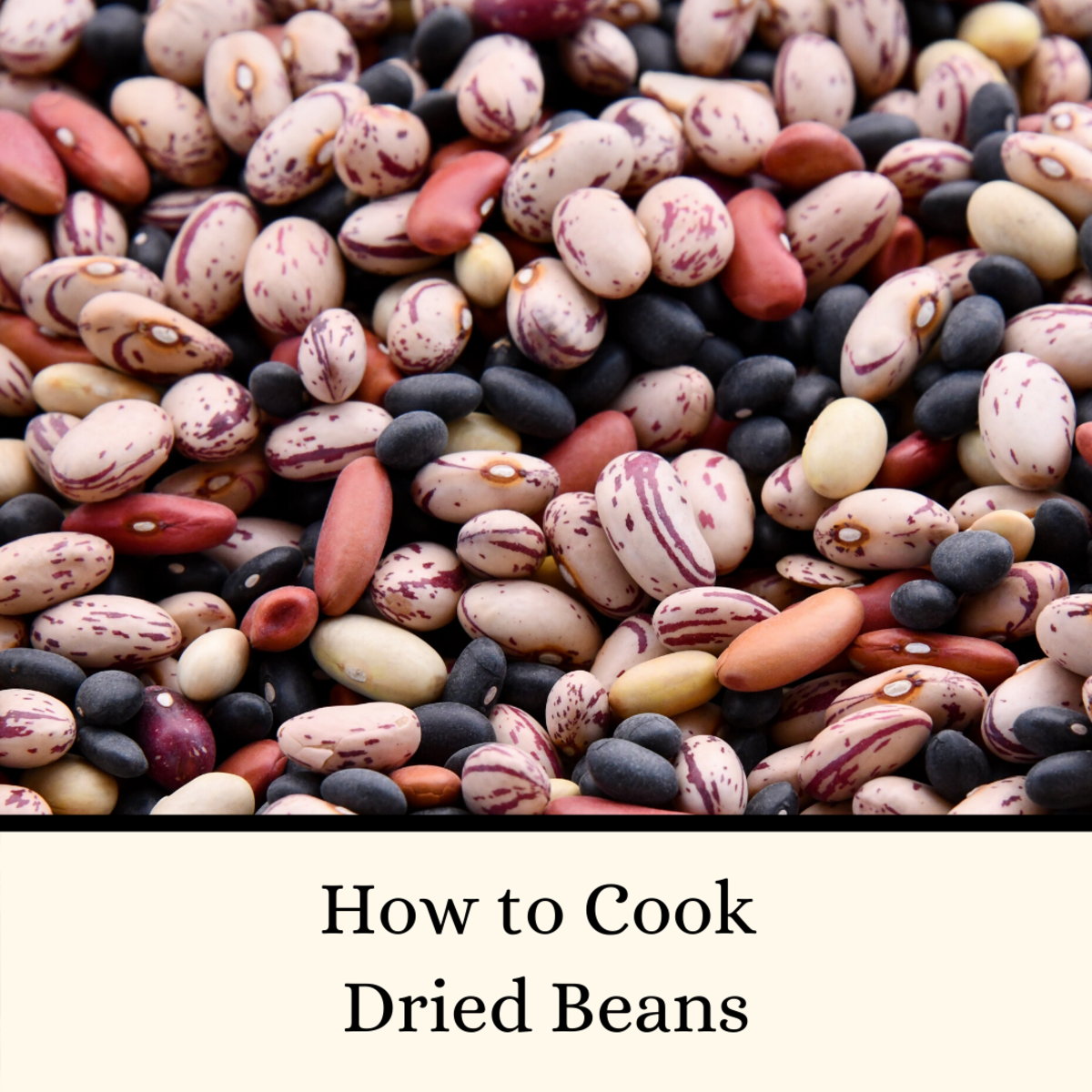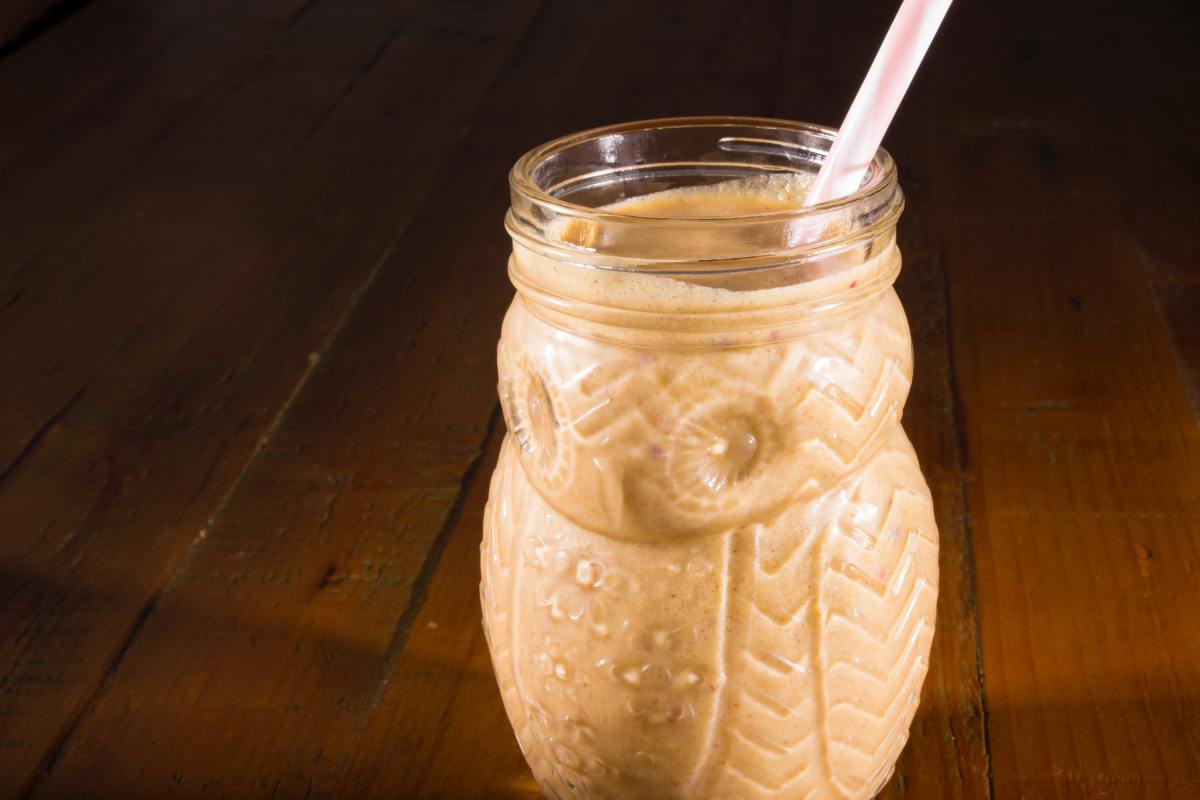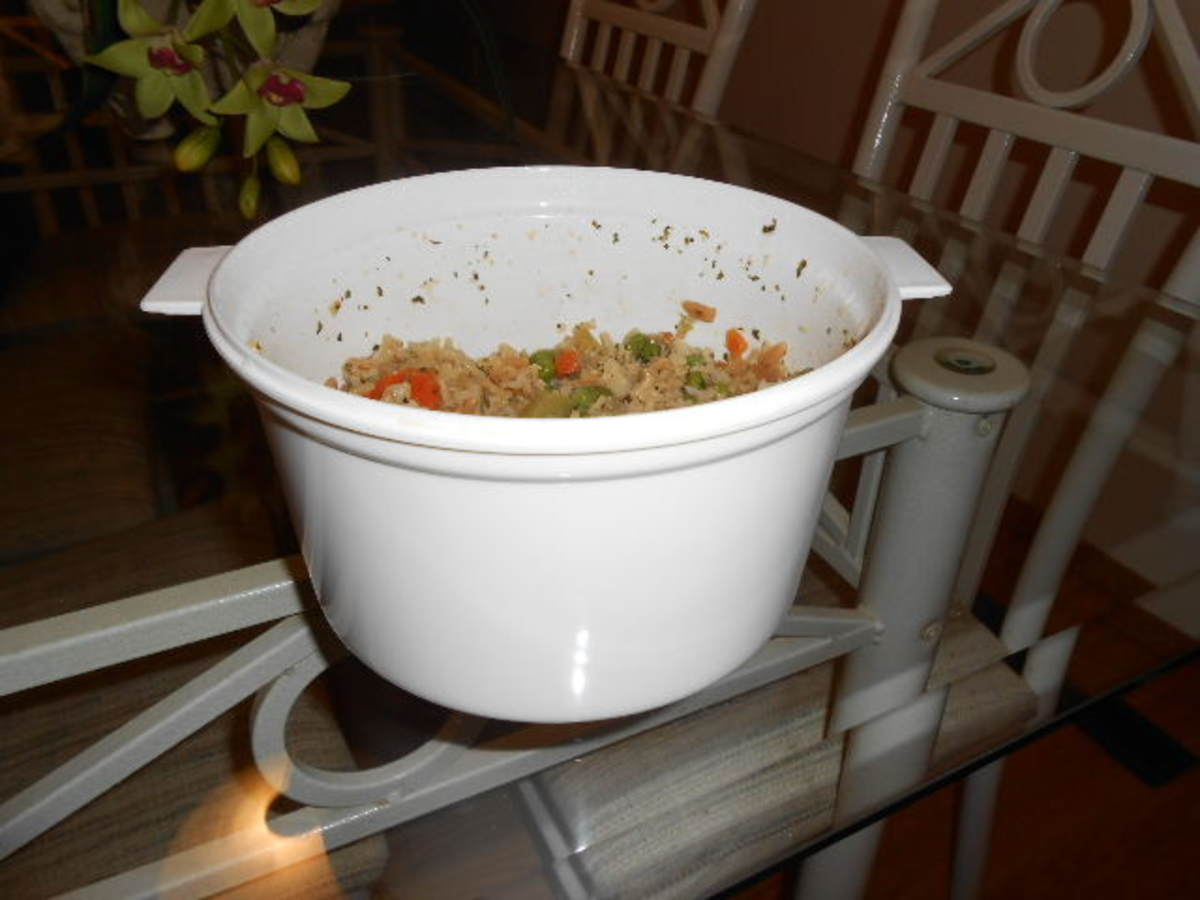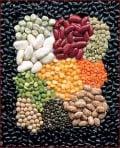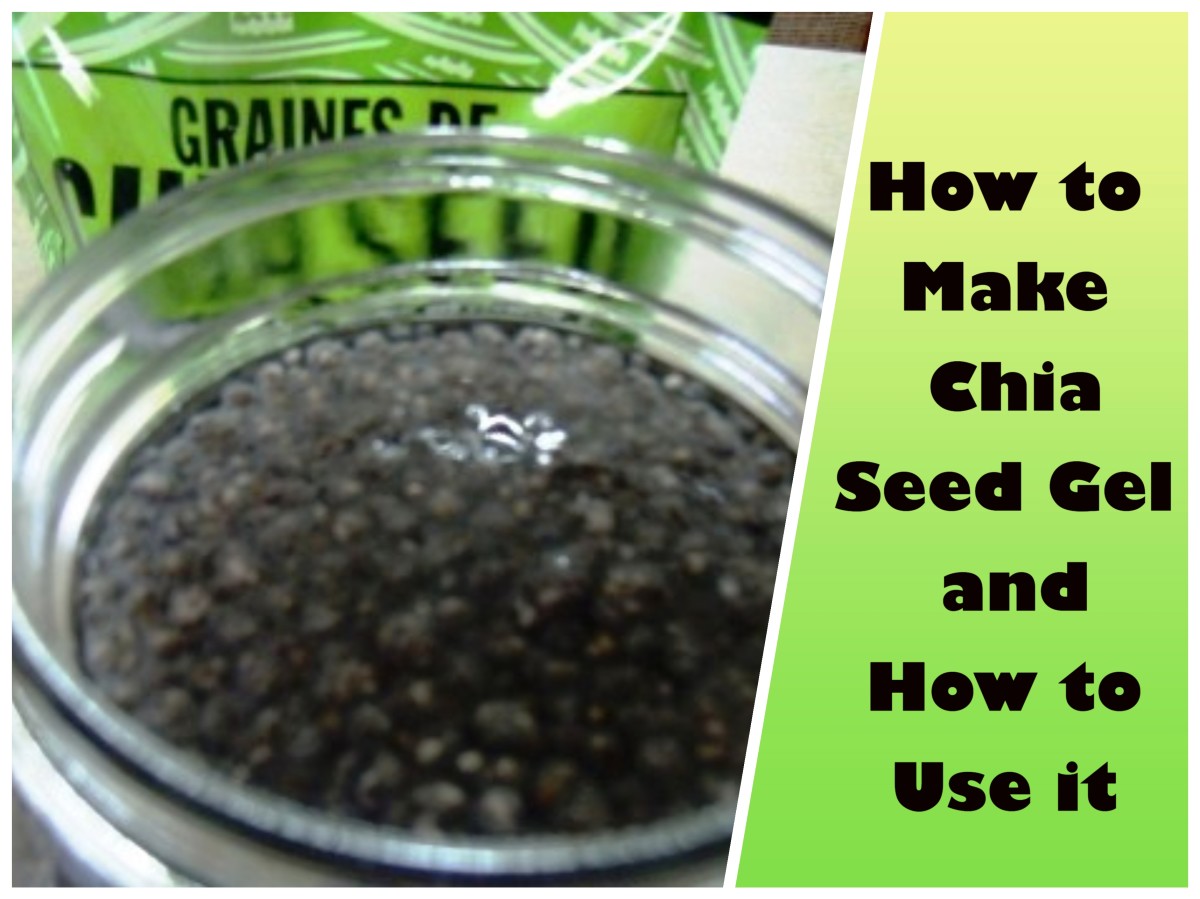All About Dried Beans
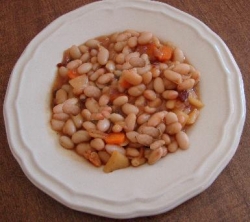
How and Why To Cook Legumes! Directions and More!
Legumes are a staple in the diets of many vegetarians, yet of course they aren't limited to vegetarians!
Cooking legumes from scratch is both very economical, as well as healthy. It's easy too!
Other than the amount of time involved, there really isn't much to the process of cooking legumes! In fact, they don't really take as long to cook as you might think. Most beans that have been properly soaked take 2 hours or less to cook! If you soak them overnight, and then start them cooking in the morning, you can be enjoying a delicious soup or other recipe by lunch!
Did you know that dried beans cooked from scratch are lower on the GI index than canned ones? If you're diabetic, or simply watching your weight, this is something good to know!
On this page I'll discuss the health benefits of legumes in greater detail, tell you how to soak and cook, them, and even point you towards some recipes you might enjoy trying!
Members of the Legume Family
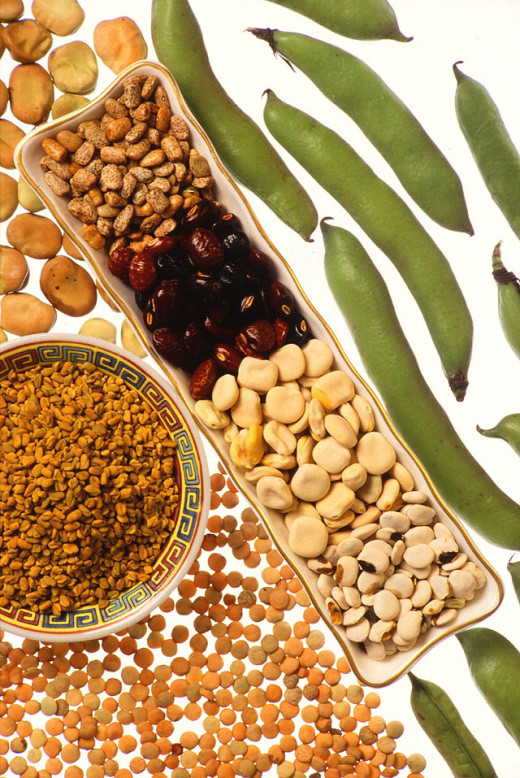
Legumes include beans, peas, lentils, and peanuts.
Did you know that legumes are rich in calcium, iron, magnesium, potassium, protein, zinc, several of the B vitamins, and many other things? I think their nutritional profile is actually pretty impressive. Keep reading to find out more!
How do you like your legumes?
Do you prefer:
How To Cook Dried Legumes - Times and Techniques
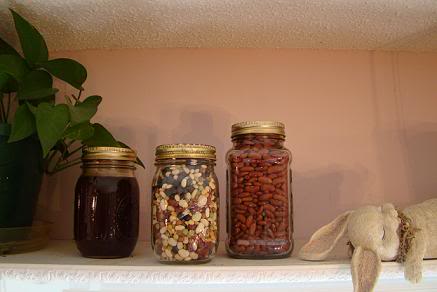
Instructions
1. Sort through the legumes and remove any that don't look good as well as any small pebbles that might be in the bag. Rinse them well. I use a large size wire strainer basket to sort though the beans and then to rinse them. It allows you to spread them out so you can see and rinse them better. (see picture below)
2. Place the legumes in a pot and cover with plenty of water. (About 3 1/2 cups of water for every cup of legumes.) Remove any that float. Do NOT add salt at this point.
3. Soak them for 6 to 8 hours, or overnight, in a refrigerator
or
if you are short on time, bring water and beans to a boil and then quickly remove the pot from the heat and let soak one hour. The overnight method helps remove more of the complex sugars that sometimes cause flatulence, although both methods help some.
4. After the soaking period, drain the water out.
5. If you will be using the same pot to cook the legumes, add water to cover them, cover with a lid, and bring the pot to a boil over medium heat. Do NOT add salt at this point either. When the water boils, reduce the heat to low and cook until tender. (Cooking legumes too fast breaks their skins.) Here are some approximate cooking times for various types of legumes.
Kidney - 1 1/2 to 2 hours
Lima - 1 1/2 hours
Baby Limas - 45 minutes to 1 hour
Navy - 1 1/2 hours
Black - 1 to 2 hours
Pinto - 1 1/2 to 2 hours
Chick Peas - 3 hours
Lentils - 30 to 45 minutes (presoaking is not necessary)
Split Peas - 1 hour
Great Northern - 1 1/2 to 2 hours
6. After cooking the legumes, you may add salt and use them in any recipe you like. (If you add salt before legumes are tender, they may never completely soften.) It's nice to keep some legumes on hand in the refrigerator to quickly add to a soup, or burrito, or serve with some leftover rice for an easy lunch.
7. Some recipes call for precooking legumes before adding them to a recipe, and others allow you to cook them just once, along with all the other ingredients. Follow the directions for your specific recipe, and/or the directions that came with your beanpot.
Note: Old legumes may take considerably more time to cook.
The Strainer Baskets I Use For Rinsing Legumes
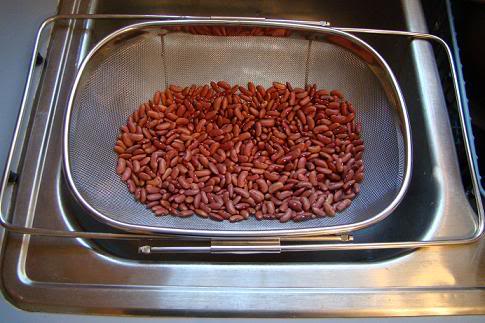
I use a large strainer basket when I'm sorting and rinsing dried legumes, as it provides more surface area, making sorting through the beans or lentils much easier! First I use it's adjustable bars to hold it in place over the sink. Then I pour the beans into the strainer, using the sprayer attachment on the sink to rinse them. After they are well rinsed, I leave the strainer in place just above the sink for a minute or two to allow the water to drip into the sink. Then I pick the strainer basket up and pour the beans into my pot. This large sized strainer basket really makes the process a snap!
When I'm ready to begin cooking a meal but haven't prepared any dried legumes, I resort to canned ones. To rinse them, I use a 6 inch strainer basket with a handle.. After rinsing the beans under running water, I sit the strainer full of beans on top of the now empty can. That allows the water to continue to drain out without having to hold it and without it making a mess all over the counter!

This is what I used for rinsing dried legumes. It's useful for rinsing them both before you soak them and after!
You can rinse fruits and vegetables or drain pasta with this stainless steel sink strainer. The unique hands-free design uses adjustable arms to hold the strainer over the sink, so your hands are free to chop veggies, pour pasta, etc.
Cinnamon can help improve digestion
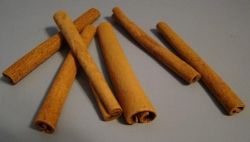
Improving the Digestibility of Beans
Did you know cinnamon helps improve the digestibility of beans?
Find out what else helps!
Beans have complex sugars, called oligosaccharides, which are not easily broken down by enzymes. This is what causes some people to have digestive problems after eating them. But eating them frequently, rather than only ever so often, helps solve this problem as the enzymes in our bodies gradually adjust and become better able to digest those sugars.
Here are a few more tips:
When cooking legumes from scratch, rinse them after the soaking period and refill the pot with new water before cooking. Doing so gets rid of some of the complex sugars which cause the gas. Make sure to cook the beans under they are fully tender too, as those that are undercooked tend to cause more discomfort.
There are several things that can be added to the cooking pot which helps as well. Savory, ginger, marjoram and several other herbs and spices improve the digestibility of beans. Kombu (a type of seaweed), and a potato cooked along with the beans and then thrown away, are also reported to make a difference.
The following three websites provide a few more hints as well.
Ellen's Kitchen has a nice section on improving the digestibility of beans. At the top of her page, click on "Add this to improve digestion" to read the section called, "Tenderizing." Also click on the link labeled "reducing gas" to read the section called, "The Musical Fruit."
Indiacurry.com has more information about reducing gas discomfort.
Active.com has an article which, provides quite a bit of information about beans, including hints on improving digestibility. Near the bottom of the first page is the section on, "Bypassing the Gas."
Nutritional Benefits of Legumes
Legumes are full of many nutrients. They are an excellent source of complex carbohydrates and protein. They contain vitamin A, B vitamins, and other vitamins. They are also rich in minerals, such as iron, calcium, zinc, magnesium, phosphorus, and potassium.
Legumes are good sources of phytochemicals and phytoestrogens which may provide some protection against breast cancer. They are a great source of fiber. In fact, beans have almost as much fiber as bran! They can help you lower cholesterol and insulin sensitivity, and maintain stable blood glucose levels. It is believed that beans may also help people prevent colon cancer, reduce your risk of heart disease and obesity, and maintain healthy blood pressure levels!
Interestingly, eating legumes was the most important dietary predictor of survival in a study of men and women age 70 and older living in Sweden, Greece, Australia, and Japan.
There are several reasons why this may be. Darker colored beans, such as black, pinto, red, and kidney, have high levels of healthy antioxidants. Antioxidants curtail the cell damaging action of free radicals. Also, as mentioned above, legumes contain many healthy minerals and other nutrients. Some of the phytonutrients in legumes—saponins, lignins, phytosterols— may actually slow tumor growth.
In another study, people who ate at least at least four servings of beans each week lowered the risk of coronary heart disease by 22 percent!
For more information about the nutrients in legumes, you may be interested in this chart showing the amount of calories, protein, fat, carbs, fiber, calcium, iron,and potassium levels that can be found in various types of legumes.
Here are some links to more information about the health benefits of eating beans.
Antioxidant Superstars: Vegetables And Beans
Information about the health benefits of eating black beans
Weight-loss, and the Glycemic Index
Most legumes are excellent weight-loss foods, when eaten in moderation, and help maintain stable blood glucose levels.
When eaten along with plenty of vegetables, legumes are an excellent weight-loss food. They contain very little fat (unless your recipe adds more fat to them!) and are quite filling, thus making it less likely that you'll snack on junk food later!
Although both types are considered to be good foods to eat on a GI diet, prepared dried beans are lower on the glycemic index than canned ones, and thus are even better at helping you maintain stable blood glucose levels.
For more information about the Glycemic index of various types of beans and other foods, you may like to view this Glycemic Index Food Chart or this GI Food Chart or read one of the following GI cookbooks:
Recipes Containing Beans or Lentils
- Homemade Vegetarian Chili Recipe
This recipe for Vegetarian Chili is unlike any other I've had! It's super thick and chunky! It's full of beans, corn, onion, tomato, bell pepper, and chili pepper. - Corn and Avocado Salsa...& Vegan Nachos!
Corn and Avocado Salsa combines the flavorful tastes of cilantro, lime, corn, and red onion, with black beans, tomatoes, and of course avocado. There's also a Vegan Nacho recipe. - Awesome Veggie Burger Recipes!
Lentil Walnut Veggie Burger and other burger recipes containing beans - Cinnamon Apple Baked Beans (And Other Vegetarian Baked Bean Recipes)!
This article contains several baked bean recipes, including a recipe for Cinnamon Apple Baked Beans. - Minestrone Soup Recipe
This is my family's recipe for Minestrone Soup. A low carb version is included as well.. - Tex-Mex Zucchini Recipe
Tex Mex Zucchini is a delicious vegetarian low carb recipe containing zucchini, black beans, onion, tomatoes, and chili powder.
Looking for more recipes?

Have you ever tried a dessert that had some form of legumes in it?
Trim Healthy Mama - A Low Carb Diet
An interesting Brownie Or Spice Bar Recipe....containing beans!
Earlier this year, several friends of mine started following the "Trim, Healthy Mama" dietary plan. I've watched the weight literally drop off them. I decided to get the book and see what there was to this plan.
The reason I'm telling you about this book is because it has a recipe for brownies that has a can of beans in it!!! I'm not kidding! The recipe also contains eggs, cream cheese, coconut oil, cocoa powder, stevia, and a few other minor things like baking soda. It doesn't have any flour any it. At all. Of any type.
When one of my friends first told me about these brownies, I couldn't believe it. They didn't sound all that good. I asked her if her family ate them too, thinking that was the true test. And she replied that her kids loved them!
I decided to give the recipe a try. Instead of using cocoa powder though, I used cinnamon, ginger, and pumpkin pie spice or nutmeg.
They are good! My friend was right! I make them at least once a week now. Because butter is a healthy fat, I often spread either butter or cream cheese on the top of my spice bars.
How About You?
Do you follow any of these diets?
© 2010 JanieceTobey




